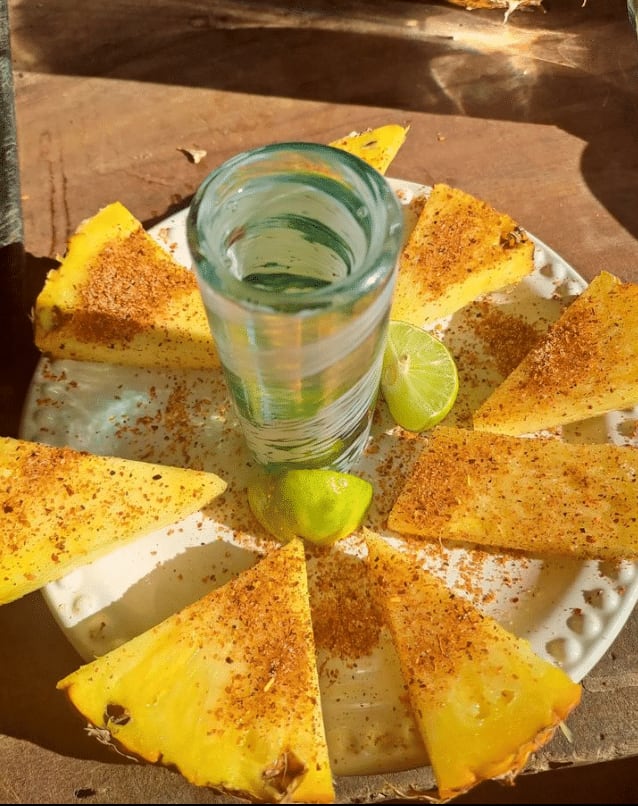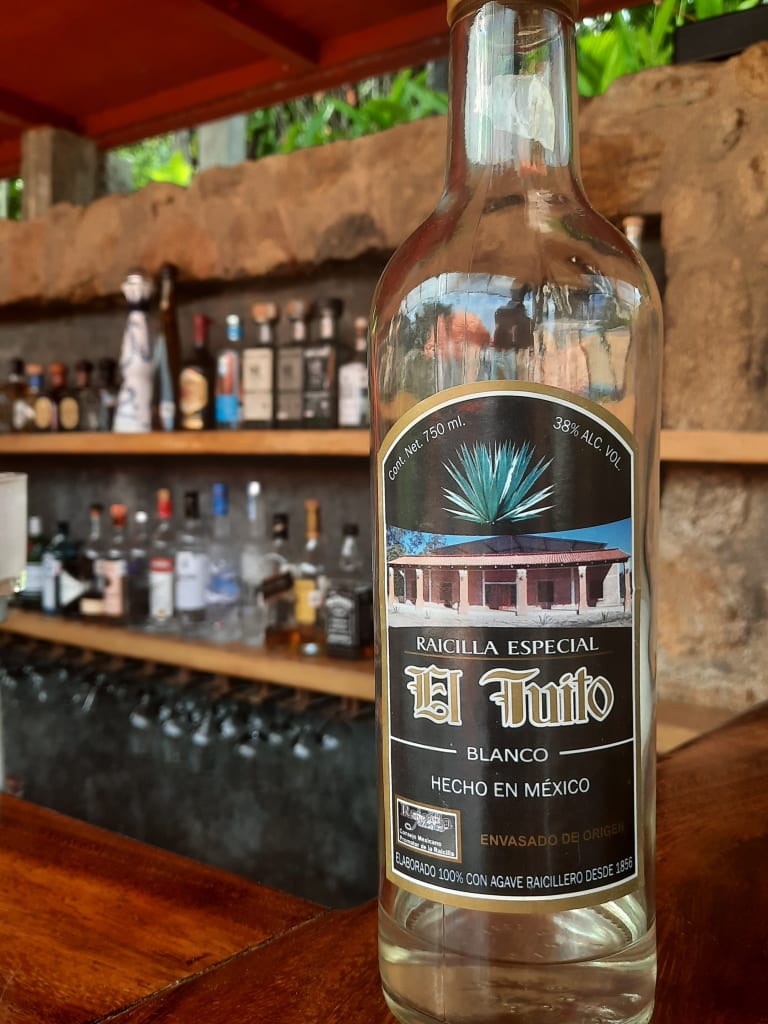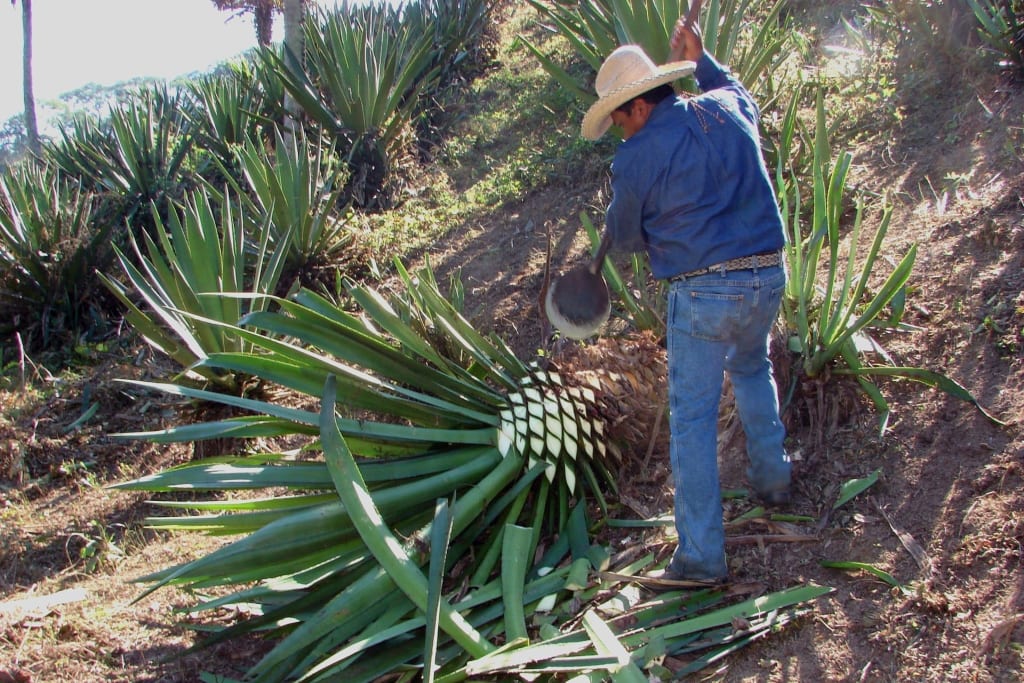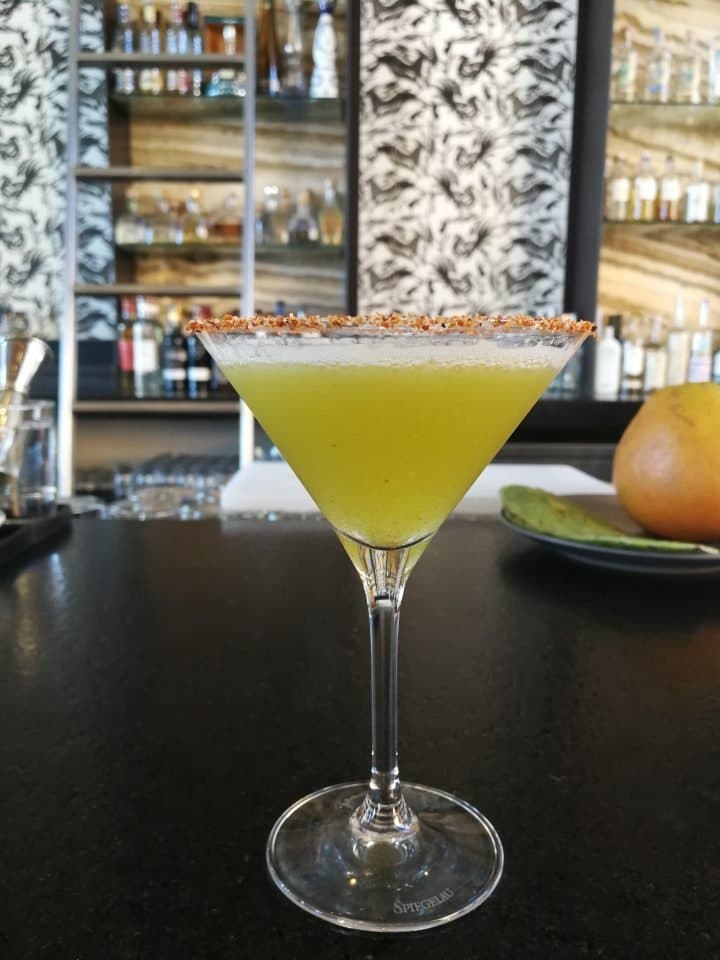
Savoring Raicilla: A Guide to Its Origins, Production, and Recipes
Savoring Raicilla: A Guide to Its Origins, Production, and Recipes
In today’s post, I will talk about Raicilla, an agave distillate that has been made since the 17th century.
You don’t need to be a beverage expert to tell if this or any other drink is better; just try it, and your palate will tell you all you need to know.
What is Raicilla?
Raicilla is a distilled beverage made from agaves inaequidens and maximiliana, endemic to the western region of the state of Jalisco, in the municipalities of San Sebastián del Oeste, Mascota, Atenguillo, and Talpa de Allende.
Also in the municipalities of Cabo Corrientes and Tomatlán.
The Raicilla was born around the mining areas in the XVII century, specifically in San Sebastián del Oeste.
The word Raicilla translates to “small root.”
Raicilla owes its name to the ingenuity of a master tavern keeper who baptized it to mock the colonial authority that had prohibited the elaboration of local alcoholic beverages.
This “agave moonshine” (as it once was) is made of organic wild agaves. Inaequidens and maximiliana in the Western Sierra are the two varieties used.
What does Raicilla taste like?

Raicilla tends to have smooth flavors of wood, wet earth, herbs, pepper, minerals, and tropical fruit flavors with a citrus finish.
Since Raicilla’s elaboration process is the same as Mezcal’s, you should expect a pronounced smoky bouquet.
When drinking it for the first time, it will feel powerful. Do it slowly and try to appreciate its aromas.
Elaboration process of Raicilla
Identify which agaves are seasoned. When the agave is “sazón,” no matter the size or the time when its flowering comes out of the center, it is known as “quiote,” an indication that the agave is ready to be harvested.
The jimado, that is, to eliminate the stalks of the agave to leave the head or pineapple totally white, without any vestige of the green stalk.
Tatemado is the cooking process performed in masonry ovens (baker type), previously heated with oak wood, for 24 hours (in the region of the western highlands). While in the coastal region, the tatemado takes place in underground fire pits for 48 hours.
Juice extraction; once the tatemado time is over, the cooked heads are removed from the oven and placed in a container to be transferred to a wooden trough, and the juices are extracted by smashing them with a wooden mallet.
Fermentation. Both juices and fiber are passed to the fermentation vats, which is carried out by the natural action “oxidation” and lasts depending on the temperature of the environment; in the winter season, it can last up to 15 days, and in the hot season up to 6 days.
Distillation; by using a distiller known as “Filipino” made with a copper ladle and the vertical part of oyamel wood; the vapors are collected in the upper part of the distiller and using a coil introduced in a recipient, water is circulated to convert the vapors into a liquid called Raicilla.
The best part: enjoy and savor one of the best authentic Mexican beverages.
Raicilla regulation and tips

- Bottled of origin
- Alcoholic graduation of 35 to 45 %
The raicilla ceased to be a rough and astringent drink that was only taken by men. Now it is a velvety spirit that can be drunk by women too.
It is also believed to be an aphrodisiac; try to shoot it straight, without mixing, but don’t drink it by yourself, always with pleasant company.
Raicilla classifications
- Young, White, or Silver: it is translucent and is the immediate result after distillation
- Aged or Matured in Glass: after being distilled, it is kept to stabilize for 12 months or more in a glass container under controlled conditions of light, temperature, and humidity
- Reposado: it is aged for two to twelve months in wooden containers under controlled conditions
- Añejo: aged in wood barrels for over twelve months
- Abocado: infused with ingredients directly incorporated (herbs, fruits, flowers, etc.) to obtain characteristic aromas and flavors
- Double distilled (only artisanal or traditional): is the one that must undergo an additional distillation, which includes some extra ingredients to obtain flavors and aromas
Types of Raicilla by Region

As I mentioned earlier, this beverage can be classified by the origin of its agaves, which will give a characteristic profile to the “aguardiente.” There are two types:
- Raicilla de la Costa. It is made with Angustifolia Haw and Rhodacantha agaves.
- Raicilla de la Sierra. It is obtained from Maximiliana Baker, Inaequidens Koch, and Valenciana Agaves.
In addition to the previous classification, raicilla can also be categorized according to its processing method into:
- Raicilla
- Artisan Raicilla
- Ancestral Tradition Raicilla
What will differentiate them will be the processes during cooking, milling, fermentation, and distillation.
These will be variable in terms of the use of technology and equipment. Minimum use of large machinery (used for larger volumes) may be classified as “Artisanal or Ancestral Tradition.”
3 Best Raicilla Cocktail Recipes
1. Mint Margarita
As you know, the Margarita is a classic cocktail served worldwide, its preparation is quite simple, and the ingredients can be found almost anywhere.
It is typically made with tequila, but the “mint Margarita” variant is served with Raicilla and a hint of fresh mint; the other remains the same as in a classic margarita.
The change of distillate will add herbaceous notes to this popular drink.
- 2 oz Raicilla
- 2 oz lime juice
- 1/2 oz agave syrup
- Fresh mint
- Ice
Process: Place the fresh mint leaves in the shaker and press them with a muddler very gently. Add the rest of the ingredients and shake. Serve on the rocks (with fresh ice) or straight up in a Martini glass. Enjoy!
2. P’yote Martini

The Martini is a trendy drink with a great variety of versions, and yes, among them, there’s one with Raicilla.
This variant (my favorite cocktail ever!) created by French chef Thierry Blouet, uses cactus juice, pineapple juice, and agave syrup and is served in a frosted martini glass with Tajín.
- 2 oz Raicilla
- 2 oz cactus juice
- 2 oz Pineapple juice
- 1/2 oz Agave syrup
- Tajín
Process: For this recipe, you will need to find fresh pineapple and a cactus paddle. Blend them with a bit of water and strain. After you have obtained the bagasse-free juices, put them in the shaker with the other ingredients, shake with ice and pour into a chilled martini glass (with tajin on the rim as in the picture above).
You can also add a touch of lime juice. Optional.
3. Tubazo
The Tuba is a traditional drink from Colima and Puerto Vallarta. Its main ingredients are coconut cream and apple vinegar; if you add raicilla, bitter, walnut pieces, red apple, and cinnamon, you get the popular Tubazo drink.
- 2 oz Coconut cream
- 1/2 oz Apple cider vinegar
- 2 oz Raicilla
- Dash of bitters
- Walnut and apple pieces to taste
- Powdered cinnamon
Process: Shake the coconut cream, apple cider vinegar, raicilla, and bitters with ice. Pour in a tall glass with fresh ice and add the fruit. Top with cinnamon powder.
Note: Although the actual Tuba beverage is not used in this recipe, the idea is to emulate its flavor.

Salud!